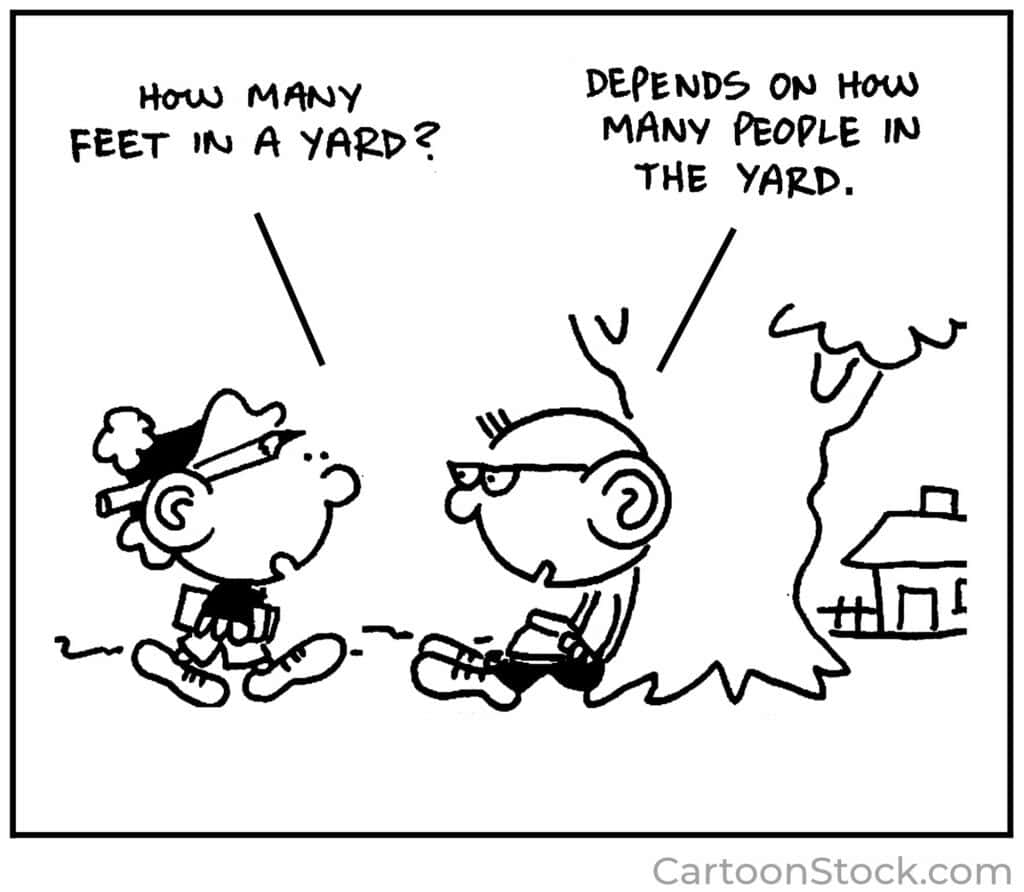
The Common Core State Standards (CCSS) include eight “Mathematical Practices” that teachers and students are encouraged to use throughout their mathematical lives. These are different from the grade-level content standards in a few ways.
- The Mathematical Practices are not grade-specific. They remain constant practices throughout the child’s education, with the hopes that they become habit.
- As the words practice and habit imply, these are mindsets and broad strategies, not mathematical procedures or rules.
For a broad look at all eight Math Practices, check out the post What Are the Math Practices and What Do They Have to Do With Me? For a deeper dive into the other seven practices, check out the list at the bottom of this post.
The first CCSS Mathematical Practice is Sense Making and Perseverance. These important skills are even more critical in the current age when computers and calculators can do algorithmic calculations, computations, and simplifications for us. What remains for the human mind is to know what operations are needed when and how information, data, and numbers fit together (sense making), as well as to endure through the sometimes-long haul (perseverance) of finding reliable solutions that are accurate, informative, and useful.
Sense making might include figuring out what operations are needed and how information, data, and numbers fit together. Perseverance refers to endurance through the sometimes-long haul of finding reliable solutions to problems as well as editing and revising strategies and explanations.
So, how can we help our children (and even ourselves) develop sense-making and perseverance in math at home?
This post was originally published at mathteacherbarbie.com. If you are viewing it somewhere else, you are viewing a stolen copy.
What it Means to Make Sense of a Problem
Another way of describing making sense of is to understand the problem.
For many generations, math was taught as a set of algorithms, or steps, to follow — sometimes without a lot of sense-making. Thus, math has a reputation of being either understood or not understood without much gray area in between. Many people lose sight of the idea that mathematical thinking is a process, that understanding can grow and develop through experimentation, through thought, through analogy, even through play.
This experimentation and play is the process of making sense. We know that making sense is a critical step to understanding. We “do mathematics” at any stage of the making sense process. We gain useful information about the problem even if we don’t make it all the way to the end stages of understanding.
We gain useful information about the problem even if we don’t make it all the way to the end stages of understanding.
The process here, the practice or doing, is what’s important. Not the final result. To make sense of a problem is to investigate the relationships between the parts of the problem, to identify what the final goal of the problem is, to question what operations and procedures can take you from the given information to the goal, to identify what types of quantities there are and what units they’re measured in, to explore alternatives and seek similarities and differences with other problems you’ve solved before.
How to Make Sense of a Problem
Look up “how to solve word problems in math.” You’ll see a variety of step-by-step methods that are sometimes-but-not-always useful. One thing they have in common is several steps dedicated to sense making. But different sense-making procedures will be more or less useful in different situations and for different people. So instead of a strict set of rules to follow, I list some ideas below to help you explore how you and your child each make sense of problems best. Some will work for you, some won’t. Some will work for your child, some won’t. You won’t know until you try.

- Read the problem first without reading the numbers. Just skip over the numbers. Then talk, think, or draw a picture about the general context of the problem.
- Read the problem out loud.
- Identify and state what the problem is asking for. What will the answer look like?
- Write a sentence for the answer, leaving a blank for the numbers and specifics. Seriously. Start the problem by writing out the framework of the answer, even though you don’t yet know what that final number or amount will be.
- Follow the units on the quantities given. Do you see measurements of feet or inches? Times measured in seconds or weeks? Counts of students, children, or birds? Notice all of these units in both the given information and the desired final result.

- If you can, draw a picture of the situation. Draw the picture first, then fill in the numbers.
- Examine the mathematical relationships among all the information you’re given. Are these groups of things that are being combined together for a total (part+part=whole)? Is this a group that’s being duplicated some number of times, or split into parts (size of group $\times$ number of groups = total)? Is this a repetitive process that grows proportionally?
- Translate those relationships into mathematical operations, if you haven’t already. Check that all of your units make sense with those operations. (For example, if you’re adding minutes plus inches, something has gone wrong.)
- Before doing any arithmetic, make a guess about the final answer.
- After doing the arithmetic, check your final answer with both your guess and with what you know about the world. Does this final answer make sense? Put the answer into your sentence and read it out loud. Does it still make sense?
What it Means to Persevere in Math
To persevere is to keep trying. This might be important in trying to solve a single word problem, in trying to master a skill, or in memorizing a set of facts. It’s important, however, to learn to persevere effectively. Sometimes drilling, such as in shooting free-throw after free-throw, is useful to create a muscle memory of a specific set of movements or steps. However, most often, we need to try different approaches, different methods, or at least tweak what we’re doing with each repetition. Effective perseverance in math can look like any of the following:
- Trying different approaches and methods
- Asking questions
- Celebrating the small gains
- Making, examining, and correcting errors
- Seeing a task through
- Learning when to power through and when to take a break and come back later
- Asking for help when needed
- Breaking a large problem into smaller problems
- Practicing and mastering smaller skills that might be “in the way”
- Using multiple models
- Using all relevant available tools and strategies
- Working together with other people
- Playful exploration
- Restrategizing, rereading, and returning to earlier phases of problem solving
- Any of the sense-making strategies above
Why Perseverance in Math is Important
Eventually, everyone gets stuck in a mathematics problem or procedure. Without perseverance, we remain stuck there. Perseverance allows the student to feel the immense satisfaction of overcoming an obstacle. This practice also build’s children’s problem solving abilities and self-discipline both in and out of the math classroom.
Ultimately, perseverance through hard things, math included, builds character and personal effectiveness as children grow into teens and adults.
Specifically, perseverance in math allows children to keep doors wide open for their future by continually growing both their math skills and their problem solving skills; with wide-open options, as they grow toward adulthood, this allows children to make the choices that are best for themselves, their families, and their communities.

How to Help Someone Learn to Persevere
The best way to teach perseverance is to model it.
The best way to teach perseverance is to model it. Sit alongside your child and engage in the problem solving process. (Make sure you’re working through the process with them, not for them!) When you’re stuck on a problem, find a way to persevere yourself, and model it explicitly for your child. If you need to, pull out the lists above or any others you find for inspiration about what to try next. When your child is stuck, make gentle suggestions or questions about what other strategies or ideas they might try. Also, notice when your child is too frustrated or “flooded” to make further progress, and suggest they take a break and come back later (you’ll probably have to help them remember to return to it!) Finally, celebrate the small successes. Very few of us can find ourselves persevering long term in anything without at least the occasional pat on the back or sense of accomplishment, no matter how small. And remind yourself as well as your child,
You’ve Got This!
For a deeper dive into all eight practices, check out the following posts:
MP2: Abstract and Quantitative Reasoning
MP3: Constructing and Critiquing Arguments
MP5: Strategically Choosing and Using Tools
